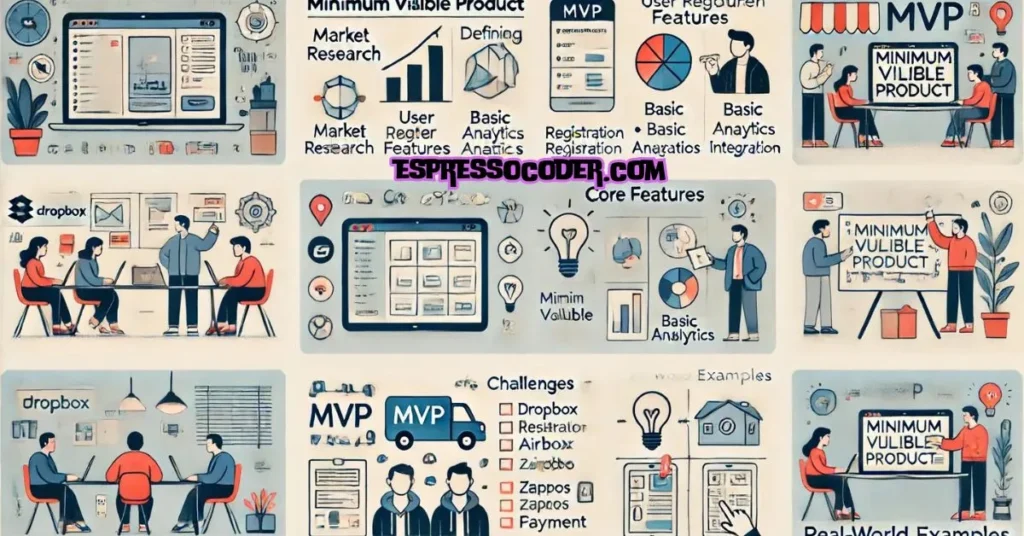In the dynamic world of startups, the concept of a Minimum Viable Product (MVP) is crucial. An MVP allows entrepreneurs to launch a product with the most essential features, minimizing costs and risks. This approach helps in testing the market, getting user feedback, and iterating the product quickly. This article provides a comprehensive overview of startups with MVP products, covering the essentials from development to launch.
Contents
What is an MVP?
A Minimum Viable Product (MVP) is a product version with just enough features to satisfy early adopters and provide feedback for future development. This strategy aims to reduce the time to market, gather validated learning, and efficiently use resources.
Key Benefits of MVP
- Reduced Risk: By investing only in essential features, startups can avoid the financial risk of a full-scale product launch.
- Quick Market Entry: An MVP enables startups to enter the market faster and establish an early presence.
- Customer Feedback: Early user feedback is invaluable for making informed decisions about the product’s future development.
Developing an MVP: Steps and Considerations
Step 1: Market Research
Before developing an MVP, thorough market research is essential. This includes understanding customer needs, identifying market gaps, and analyzing competitors. The goal is to ensure that the MVP addresses a real problem for the target audience.
Step 2: Define Core Features
Identify the core features that solve the primary problem for your target users. These features should provide value while being simple enough to develop quickly.
Core Features Identification
| Feature | Importance Level | Development Complexity |
| User Registration | High | Low |
| Basic Analytics | Medium | Medium |
| Payment Integration | High | High |
| User Feedback System | Medium | Low |
Step 3: Build a Prototype
Creating a prototype helps in visualizing the MVP and refining its features. This step involves sketching out the user interface, designing user flows, and developing wireframes. The prototype is a preliminary version that can be adjusted based on initial feedback.
Step 4: Develop the MVP
The development phase involves actual coding and creating the MVP. This phase requires an MVP Development Team https://mvpdevelopmentteam.com/ skilled in agile methodologies, ensuring iterative progress and adaptability to feedback.
Step 5: Launch and Measure
After development, launch the MVP to a selected group of early adopters. Use analytics tools to track user behavior and gather feedback. This data is crucial for making improvements and deciding on the next steps.
Key Metrics for MVP Success
| Metric | Description | Importance |
| User Engagement | Measures how users interact with the MVP | High |
| Retention Rate | Percentage of users returning to the MVP | High |
| Customer Feedback | Insights from user experiences | Medium |
| Conversion Rate | Users taking desired actions (e.g., purchase) | High |
Challenges in MVP Development
While developing an MVP offers numerous advantages, it also comes with challenges. Addressing these challenges is critical for the success of the startup.
Common Challenges
- Scope Creep: Expanding the MVP beyond essential features can delay the launch and increase costs.
- Quality vs. Speed: Balancing the need for a quick launch with the quality of the MVP can be difficult.
- User Feedback: Interpreting user feedback correctly to make productive changes can be challenging.
Strategies to Overcome MVP Challenges
| Challenge | Strategy |
| Scope Creep | Strictly prioritize features based on importance |
| Quality vs. Speed | Adopt agile methodologies for iterative improvement |
| Interpreting Feedback | Use structured feedback mechanisms and surveys |
Real-World Examples of Successful MVPs
Several well-known companies started with an MVP and iterated based on user feedback.
Example 1: Dropbox
Dropbox’s MVP was a simple video demonstrating the basic functionality of file synchronization. This video helped gauge interest and gather feedback before building the full product.
Example 2: Airbnb
Airbnb’s MVP was a basic website to test the concept of renting out air mattresses in their apartment to conference attendees. The feedback received helped refine their business model.
Example 3: Zappos
Zappos started with a website offering a small selection of shoes. The founder would purchase shoes from local stores and ship them to customers, testing the online retail model before scaling.
Conclusion
Developing an MVP is a strategic approach for startups to test their ideas with minimal risk and investment. By focusing on core features, engaging early adopters, and iterating based on feedback, startups can refine their products and increase their chances of success. Despite the challenges, a well-executed MVP can pave the way for a successful product launch and sustainable growth.
FAQ
What is the primary goal of an MVP?
The primary goal of an MVP is to launch a product with essential features quickly to validate the idea in the market, gather user feedback, and make informed decisions for future development.
How do you determine the core features for an MVP?
Core features are determined by identifying the primary problem the product aims to solve and selecting features that provide the most value to early users while keeping development complexity low.
What are the key metrics to measure the success of an MVP?
Key metrics include user engagement, retention rate, customer feedback, and conversion rate. These metrics provide insights into how users interact with the MVP and inform subsequent development decisions.
How can startups overcome scope creep during MVP development?
To overcome scope creep, startups should strictly prioritize features based on their importance and impact. Maintaining a clear focus on the MVP’s core purpose helps avoid unnecessary expansions.
Why is user feedback important in MVP development?
User feedback is crucial as it provides real-world insights into how users perceive and interact with the product. This feedback guides iterative improvements, ensuring the product evolves in a way that meets user needs effectively.

